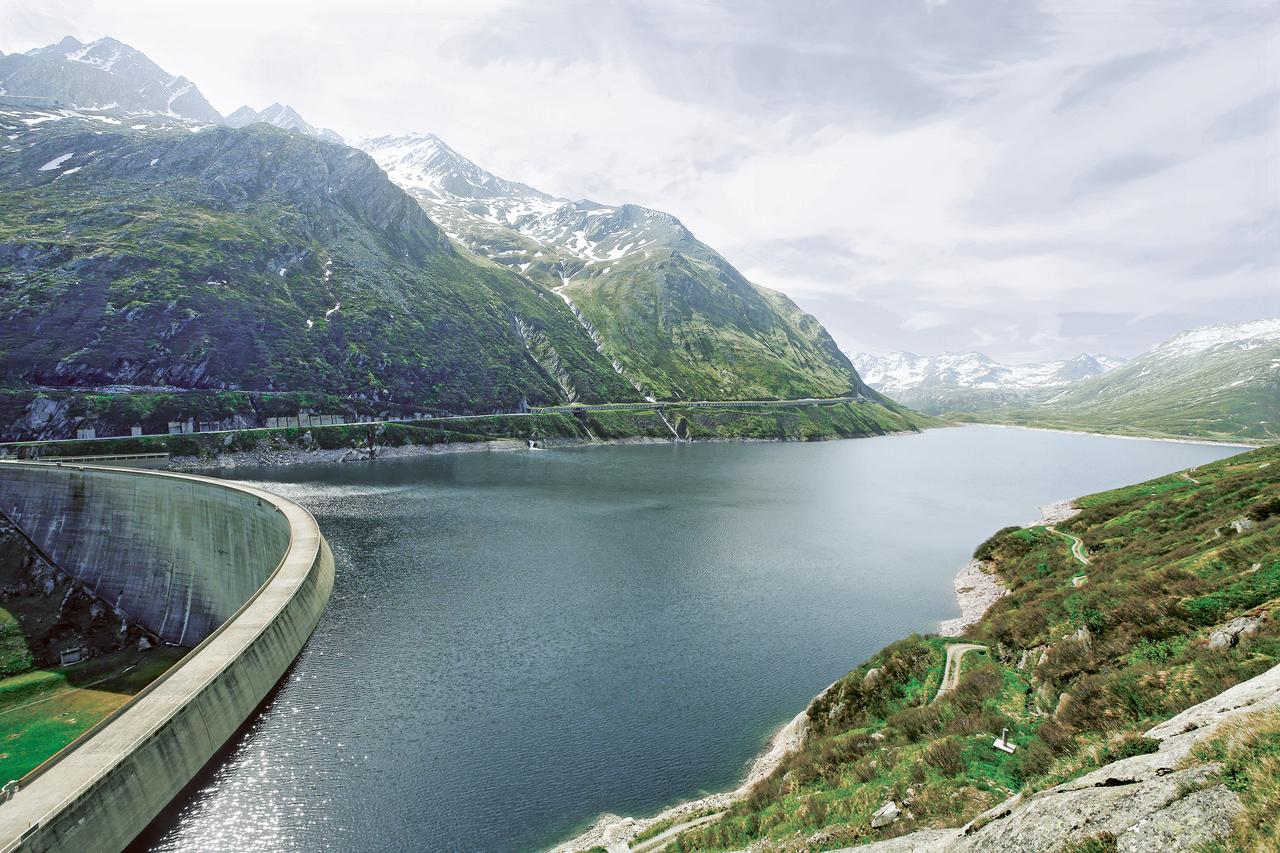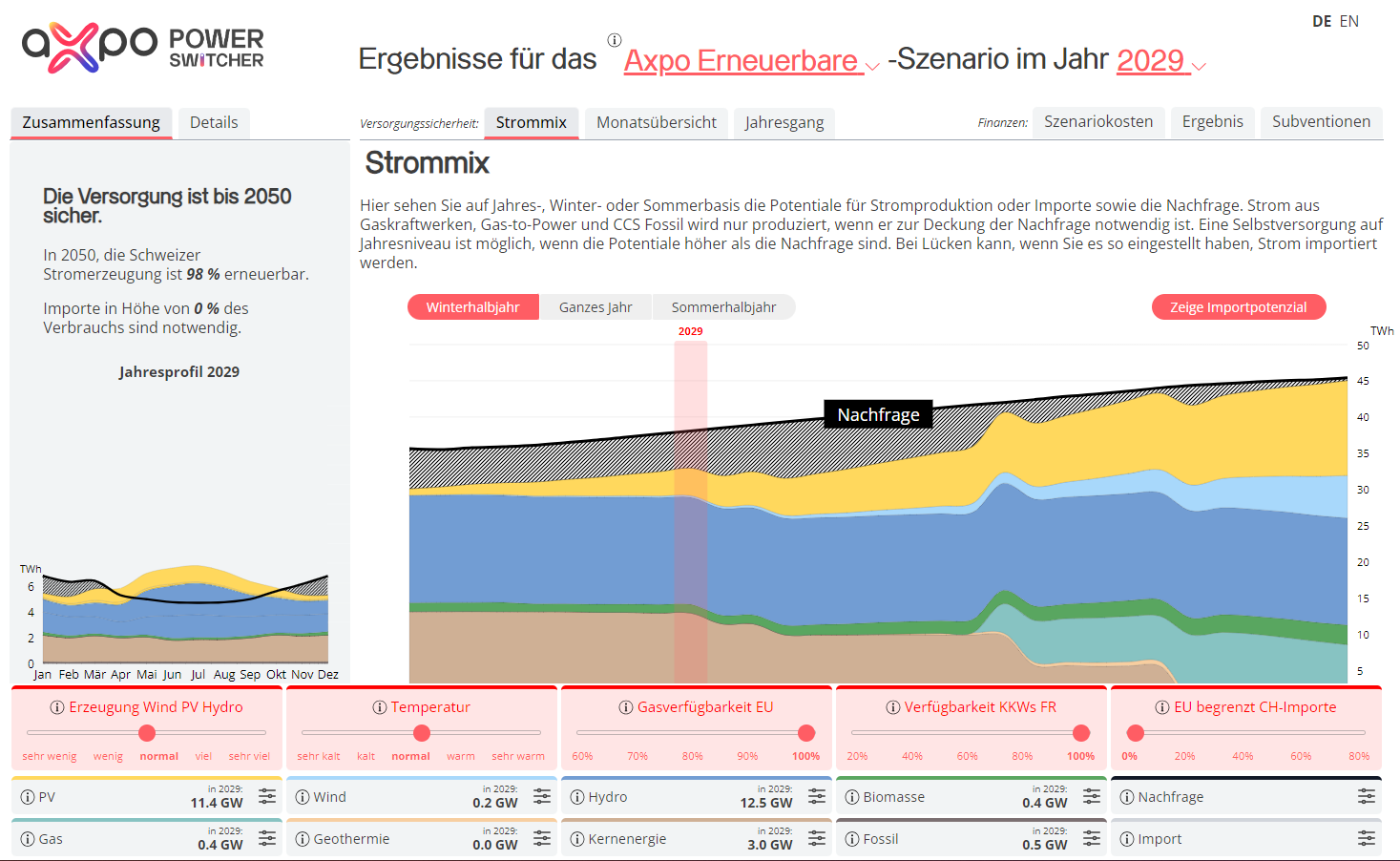16.02.2018 | The basis for reliable electricity transport
All about power masts
A bit like small Eiffel towers, power line masts reach up to 50 metres in height and have been populating the Swiss landscape for over 100 years. Quite familiar, but for most of us unknown. We took a closer look at these giant structures.
Power masts are the basis for reliable power supply. They carry heavy loads - the conductor cables of a large lattice tower can weigh several tonnes. Thanks to these masts, we can transport power reliably and efficiently from A to B. High standards: They must withstand the forces of nature such as storms, snow and water, while at the same time interfering as little as possible with the landscape through design and positioning. On your next car or train ride through the Swiss countryside, it's worthwhile to take a closer look at engineering art that varies in terms of material and design depending on the grid level:
Tailored engineering art
Massive, steel masts are needed for the transmission grid (220 - 380 kV), which transports electricity directly from large-scale power plants over long distances. Swissgrid is responsible for the Swiss transmission grid with a length of 6700 km. The lines for this voltage level are generally dimensioned for much higher currents than those for lower voltage levels. A conductor cable with a larger cross-section is required. In turn massive mast structures that are typically spaced at a distance from 300 to 500 metres apart are necessary. The lattice construction gives the structure stability and also has the advantage of using less material as compared to a massive mast. Lattice masts are up to 50 metres high and made of 100-200 tonnes of steel. The giant masts are erected on location. Individual components are assembled with the help of a crane, or in remote mountainous regions with the help of helicopters. The complex assembly takes several days.
In the supra-regional distribution grid – with a lower voltage of 50 to 110 kV – mainly concrete and steel masts are used. These masts are somewhat less high at 20 to 30 metres and the distance between the masts is smaller at 150 to 250 metres. When foreseen in areas that are easy to access, they can be delivered in their entire length. On site, the masts weighing 10 to 25 tonnes are positioned with a crane and then the cross arms are mounted. Assembly at an accessible locations takes about one half day.
«Axpo operates the largest supra-regional distribution grid in Switzerland (110 kV, 50 kV and 16 kV).»Energyfacts@Axpo
Axpo's supra-regional distribution grid comprises about 8,000 towers spanning a distance of some 2000 kilometres.
With a height of up to 20 metres they are the dwarfs among the power towers: The concrete and wood structures in the regional distribution grid (1 - 36 kV) are used to supply urban districts, towns, as well as small and medium-sized industrial operations. The distances between the masts is only 50 metres as a rule and somewhat more for concrete masts. Erection is relatively simple and can be completed in about 1 to 2 hours. Wooden masts are being displaced by underground lines, but they are still widely used in rural areas. Stability is not to be underestimated. Wooden masts must be replaced on the average every 25 years. At favourable locations and if wood quality is good, they can last over 50 years. The closer to the customer's household, the more frequently power supply infrastructure disappears under ground.
A close look - the anatomy of power masts
In addition to the tower shaft with foundation and cross-arms, masts have numerous single parts that are crucial for reliable power supply:
- The foundation, normally a concrete structure, ensures stability and reaches several metres into the ground. The size of the foundation depends on the tower height, type and ground properties.
- The protection at the isolator prevents birds from building nests on the mast or soiling the isolators.
- Insulation lines ensure that the interfaces between the masts and the conductor cables are insulated.
- The vibration dampers absorb energy and diminish mechanical oscillations in the cable that can be caused by winds or ice.
- The earthing cable at the top of the mast works like a lightening rod and is used for communication: It contains fibre optic cables for the communication between power plants and substations with protection and control signals.
- Supra-regional and regional distribution grid: Ladders with fall protection systems for the linemen so that masts are accessible for revisions and repairs. The regulations for protection have been defined by SUVA (Swiss National Accident Insurance Fund).
- Signs providing information on the line owner, name of the line, as well as telephone and mast numbers, so that the section can be quickly identified and measures implemented in the case of a disturbance.




.jpg)





